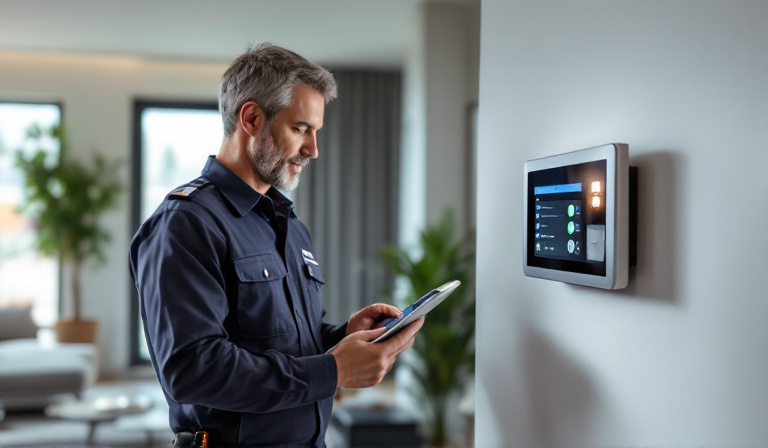
Ensuring the safety and security of your home or business is a top priority for many people. A well-maintained security system can provide peace of mind and protection against potential threats. Regular maintenance checks are crucial for the optimal performance of your security system. In this blog, we will explore comprehensive maintenance checklists that can help you stay safe and secure.
Why Regular Maintenance is Important
Security systems, much like any other technology, are subject to wear and tear over time. Regular maintenance is crucial for several reasons:
- Prevent Malfunctions: Regular checks can help identify and fix issues before they lead to system failures.
- Ensure Effective Response: A well-maintained system responds more effectively in emergencies.
- Extend Lifespan: Proper maintenance can extend the life of your equipment, saving you money in the long run.
- Compliance: Regular checks ensure that your system complies with local regulations and safety standards.
Basic Maintenance Checklist
Start with a basic maintenance checklist that covers the essential components of your security system:
- Visual Inspection: Regularly inspect cameras, sensors, and alarms for any visible damage or wear.
- Test the System: Conduct regular tests to ensure all components are functioning correctly, including motion detectors, alarms, and cameras.
- Check Power Supplies: Verify that all power supplies, including batteries and backup systems, are in good working order.
- Update Software: Ensure all software and firmware are up to date to prevent vulnerabilities.
- Review Security Footage: Regularly review and archive security footage to ensure cameras are capturing clear images.
Advanced Maintenance Tips
For those who want to delve deeper into security system maintenance, consider the following advanced tips:
- Professional Inspection: Schedule periodic inspections by a professional to identify issues that may not be visible during a basic check.
- Network Security: Ensure your security system is protected against cyber threats by using strong passwords and secure connections.
- Sensor Calibration: Regularly calibrate sensors to maintain accuracy and reduce false alarms.
- Environmental Adjustments: Adjust cameras and sensors according to seasonal changes to maintain optimal performance.
- Documentation: Keep detailed records of maintenance activities, including dates and any issues identified or resolved.
Seasonal Maintenance Considerations
Different seasons can present unique challenges for your security system. Here’s how to prepare:
- In Winter: Check for snow or ice build-up on cameras and sensors. Ensure all outdoor equipment is weatherproofed.
- In Spring: Inspect for water damage and conduct a thorough cleaning of all components.
- In Summer: Ensure that all electrical components are protected from overheating. Check for any damage from summer storms.
- In Fall: Clear away fallen leaves and debris that may obstruct sensors or cameras.
DIY vs Professional Maintenance
Deciding between DIY maintenance and hiring a professional can depend on various factors, including your system's complexity and your technical expertise:
- DIY Maintenance: Suitable for basic checks and simple systems. It can save money but requires some technical know-how.
- Professional Maintenance: Recommended for complex systems or when issues are beyond your expertise. Professionals can provide a thorough inspection and more comprehensive maintenance.
Common Issues and Troubleshooting
Despite regular maintenance, issues can still arise. Here are some common problems and their solutions:
- False Alarms: Often caused by sensor misalignment or calibration issues. Check sensor positions and recalibrate if necessary.
- Camera Malfunctions: Check for obstructions or damage. Ensure that the power supply is stable and the network connection is secure.
- Software Glitches: Regularly update software and firmware. Restart the system if you encounter any glitches.
- Battery Failures: Regularly replace batteries in wireless components to prevent unexpected failures.
Conclusion
Maintaining your security system is an ongoing task that requires diligence and attention to detail. By following these maintenance checklists, you can ensure that your system remains reliable and effective. Whether you opt for DIY maintenance or seek professional assistance, the key is regularity and thoroughness. Stay proactive, and your security system will continue to provide the protection and peace of mind you desire.

